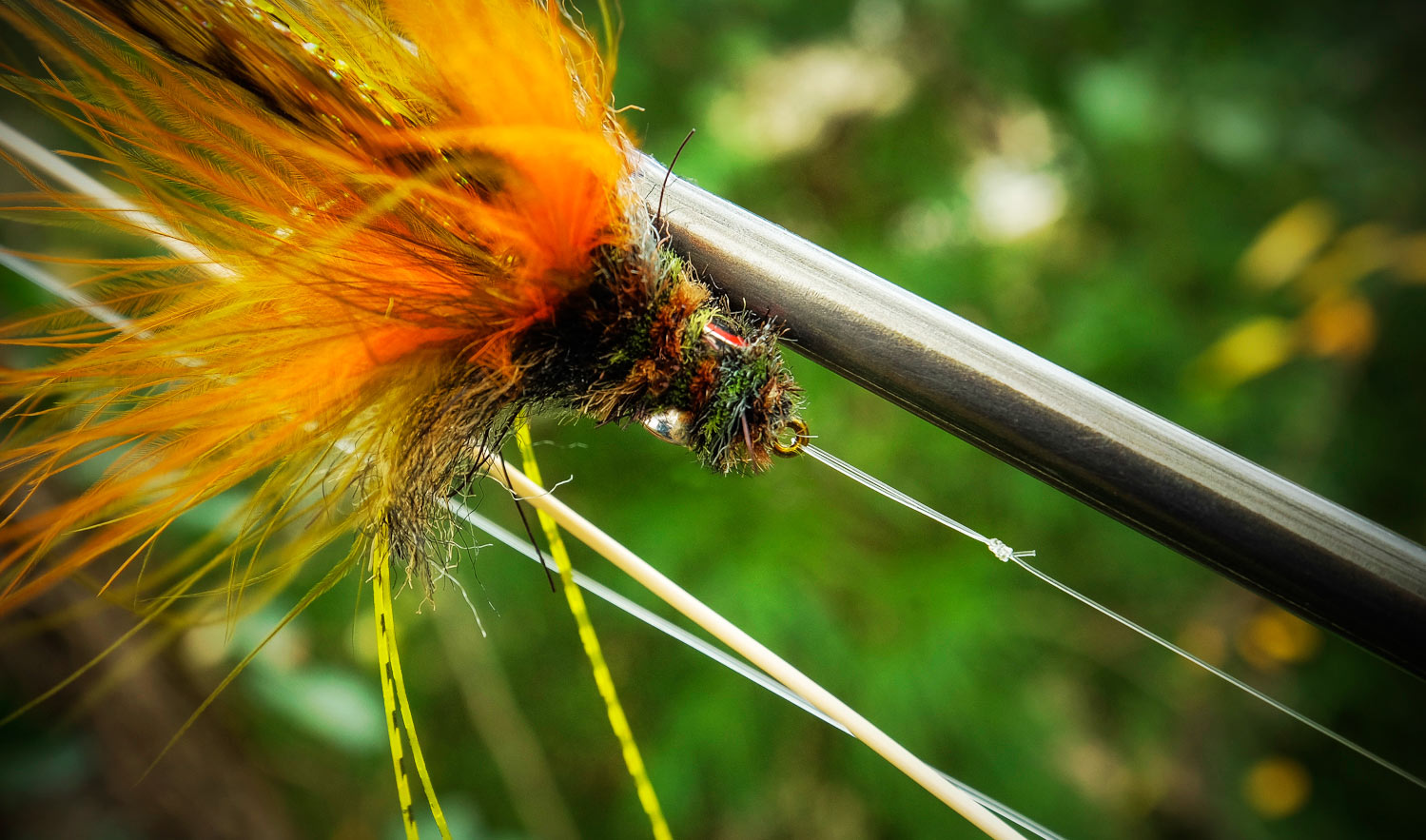By Louis Cahill
This easy fishing knot will help you catch more fish.
I learned the Double Figure 8 Loop Knot when I started getting serious about tarpon fishing. It quickly became the go-to knot for all of my saltwater and streamer fishing. I even use it to attach nymphs from time to time. It has become indispensable to me and I am absolutely sure that I catch more fish by using it. No matter what species you target, the Double Figure 8 will help you fish better.
Here are 7 reasons I use the Double Figure 8 Loop Knot.
Better Action
The key to enticing fish to eat a fly is lifelike action. Since a loop knot doesn’t lock the tippet down against the eye of the hook, your fly is free to move at any angle in the water. Any fly attached with a loop knot will move in a more lifelike manner and is more likely to be eaten.
Flies sink faster
With a traditional fishing knot, like a clinch knot where the tippet is locked to the eye of the hook, a weighted fly has to pull the tippet down across its width. This causes resistance. Think of it as putting your rod tip in the water and moving it quickly sideways. Can you feel the resistance? With a loop knot, the fly can pivot in the loop and dive, drawing the tippet down along its length. Think of that as plunging your rod tip into the water tip first. Much less resistance, right? That’s why loop knots are the standard for saltwater fly fishing.
Small profile
The Double Figure 8 does not rely on multiple wraps of line for its holding power. The simplicity of the jam knot creates a strong knot that’s much smaller than other fishing knots. A smaller knot is less visible to the fish. This is huge when using heavy bite guards for species like tarpon or musky. This does, however, lead to the one exception in my use of this knot. I do not use it to attach the hook when fishing tube flies. Because I rely on the larger knot to stop the tube, I use a surgeon’s loop.
100% line strength
The Double Figure 8 is a jam knot. That means it’s two simple knots which slide together and lock into place. There are no weak points in the knot. No places where tippet can cut itself and tags don’t pull through when the tippet stretches. Your knot strength is the full tippet strength.
Low friction tightening
The strength of you knots is only as good as the care you take in tying them. We all know that we should moisten our knots before tightening them. This keeps the tippet material from being weakened by heat, caused by friction when the knot is tightened. Because the Double Figure 8 does not have heavy multiple wraps to tighten, it snugs down easily with little friction and the chance of damaged tippet is lessened.
Your fly swims straight
Because the Double Figure 8 tightens down perfectly straight, there is no kink in the knot and your fly tracks nice and straight. This is not the case with most loop knots.
Easy to tie
The simplicity of this knot makes it easy to tie in a hurry. This has brought fish to hand for me on many occasions. Just last week my fly was refused by a cruising bonefish. I was able to change flies quickly and catch the fish before he was out of range.
How to tie the Double Figure 8 Loop Knot
Louis Cahill Gink & Gasoline www.ginkandgasoline.com hookups@ginkandgasoline.com Sign Up For Our Weekly Newsletter!


Why not a non-slip loop? i find them easier to tie than the double figure 8
http://www.anglingknots.com/kflyfishingknots/images/nonslip.png
The no slip loop is a good knot but it has a huge profile. It works ok in smaller tippets but tie on in 60ld bite guard and you’ll see what I mean. Once you’ve tied the fig 8 a few times it’s just as easy.
VERY slick knot. Thanks, I’ve always used a non-slip loop. I like this one, will give it a try.
100% knot strength?
I’m pretty sure that’s not possible. All knots represent an anomaly in the line. As such they, by default, diminish the lines strength at that point.
Knot srength may be high with the Double 8. But with all due respect, I’d urge you to describe it other than 100%
I think he said 100% straight, not strength
I believe he said 100% straight. He later made the point that the line comes out straight rather than angled like a Homer-Rhoades
David is correct, there is no knot you can tie that maintains 100% line strength.
Yes, David is correct in that there is no knot that maintains 100% strength. However, I do not believe he implied this in the video. He said 100% straight, not strength.
8th reason – works really well with larger line diameters
I use a Perfection Loop Knot almost all the time, it’s very easy to tie, has a super small profile and you can tie it equally well on 7x or 50# wire and everything else. I see no advantage of this knot over the one I currently use, this seems rather complex when compared side to side, it may be just slightly stronger, but not enough to make me want to switch.
Agreed. I use the perfection loop on everything from size 22 nymphs to 2/0 clouser minnows in the salt. Simple with a low profile.
Great Knot!!!!!
Great knot – adding it to my inventory.
I’ve never used this not, but I see a problem. The tag faces toward the fly line. This is probably fine on an open sandy saltwater flat, but if I’m throwing to bass in some weeds, it’s gonna catch a lot of crap, losing what presentation benefits it had.
Great knot and works well on larger line. Not so well on 4X tippet; at least at my age,
Pingback: Tippets: Larko’s Angling Art, New Products for Anglers, Learning the Double Figure 8 Loop Knot | MidCurrent
Great video! Thanks for sharing……….see was that so hard? Man you guys bitch more then my Wife!
LOL! Right on.
Truly puzzled by this. I’d really like to use a loop knot more often, so I gave it a go and it broke easily on that tried and true ‘tug test’ one always uses after tying a knot. Thinking I must have got it wrong, I tried again – same result. Off to the bench for a more controlled test.
The result? 100% of the time (OK, only a dozen tests, but enough for me!) on three different diameters of tippet fluorocarbon and nylon material, this knot broke long before a Lefty’s Loop.
And Lefty’s Loop broke long before a Locked Half Blood, again 100% of the time.
Sooo… either I tie epic Locked Half Blood knots, or this knot has serious flaws.
Don’t take my word for it – do the controlled tests. I’t’s great if you find better results, but I saw more than enough to decide never to use this knot. Just sayin’, you probably shouldn’t learn this when you’re on a fish!
You should be getting much better results than that. Be sure you tippet is not old.
As I said, I’m quite happy if it works for others, but it didn’t work for me. As I said, I tried a few different tippet materials – one of them was a brand new spool – which is how it all started. Preparation for a big upcoming trip. I tested fairly carefully, but will be sticking with my old Locked Half Blood for now 😉
What are your thoughts about using this to connect large diameter leader material when customizing leaders? As mentioned, it seems to slide and cinch down easier than multi turn blood or 4x uni. No comment on whether it is easier or faster for some, just strong, small profile, and another option.
i had a problem with the “deez” steps
the “deez” step just doesn’t make sense